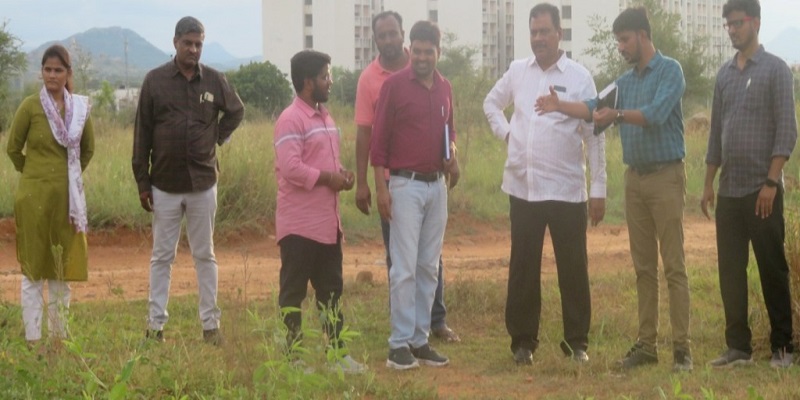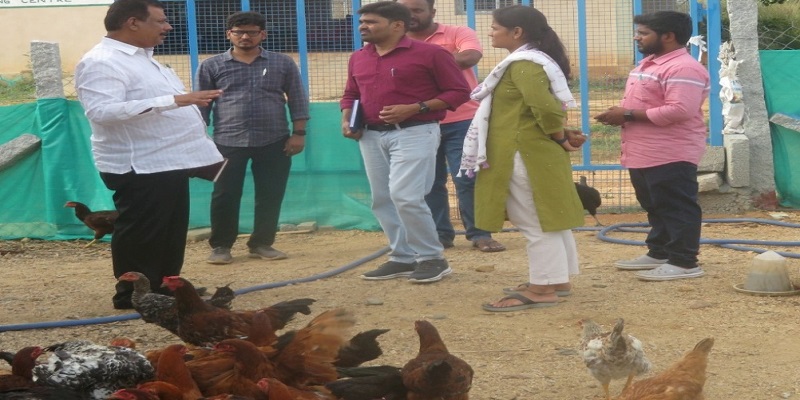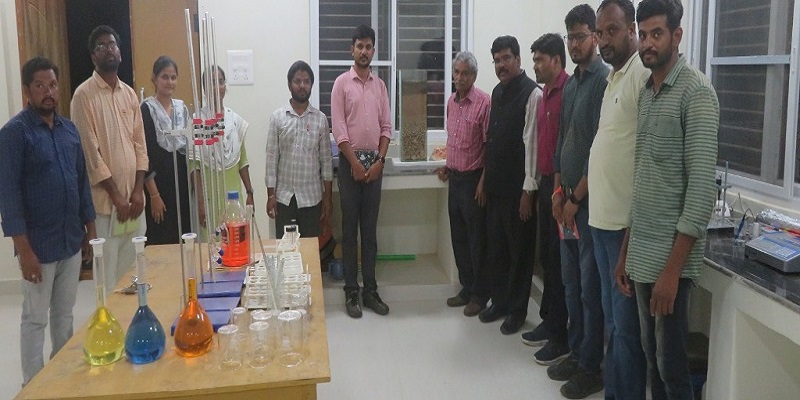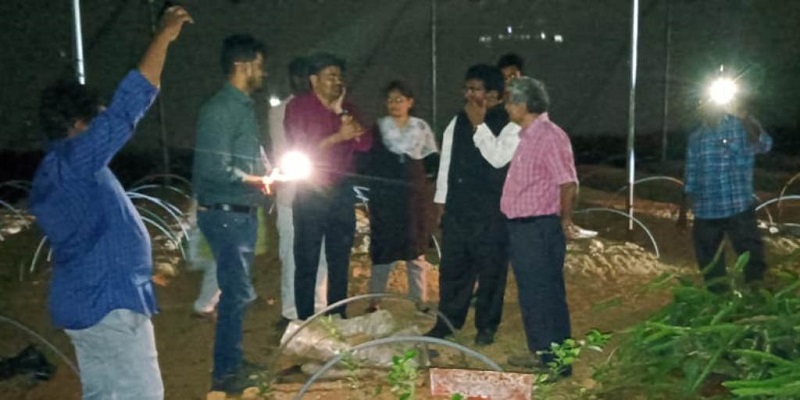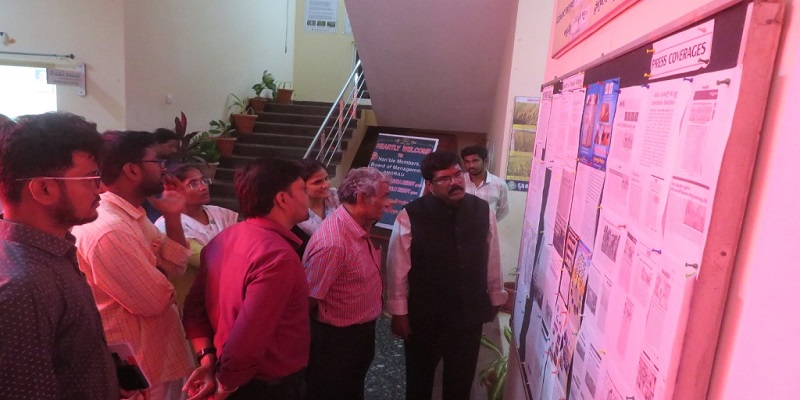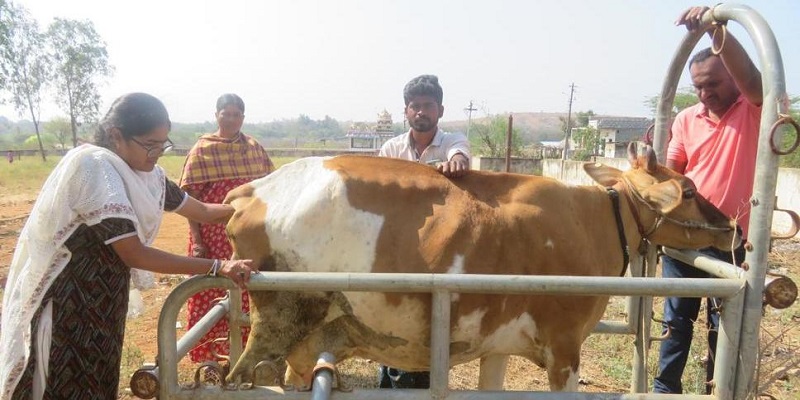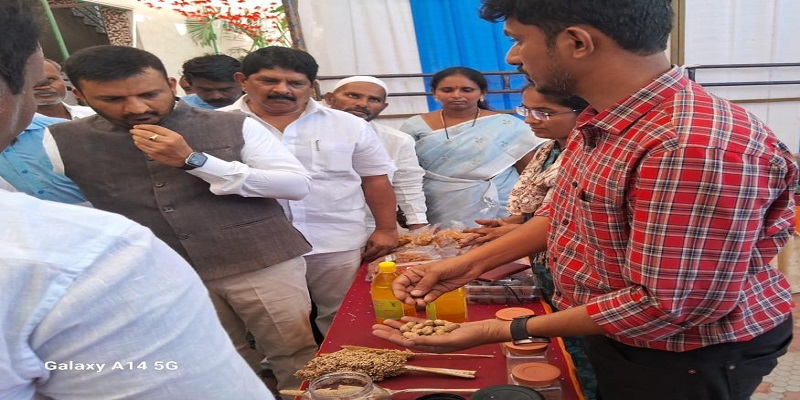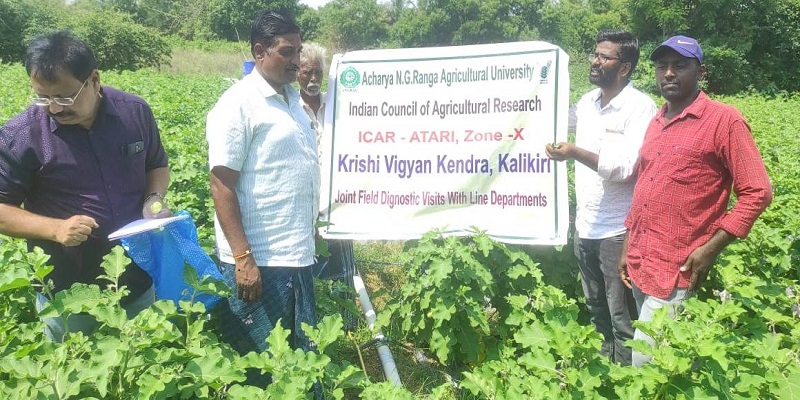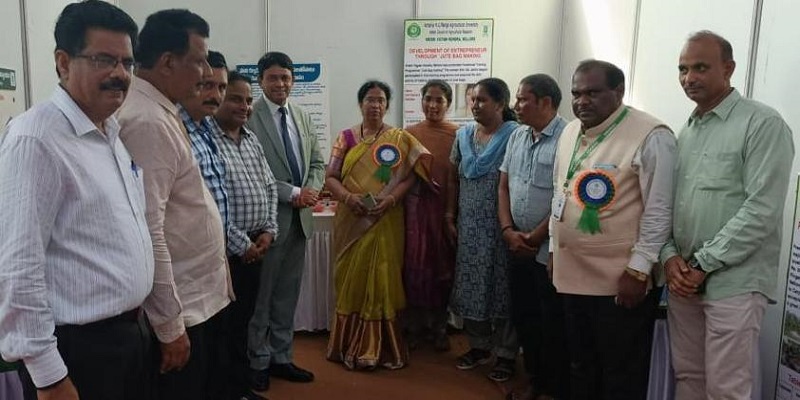Nutri Garden
KVK, Kalikiri has maintaining demo Nutri garden demo units which provides knowledge and enhance dietary diversity by providing micronutrients through constant supply of fruits and vegetables sufficient to meet the family’s requirements. Thus, nutrition gardens can prove to be a sustainable model for providing food security and diversity to combat malnutrition at the household or community level. Fruits and vegetables from the kitchen gardens are good source of micronutrients especially in the poor households. Rural areas have ample space and establishing a kitchen garden is far simpler as farm families are involved in agriculture.
Setting up a nutri-garden
Usually a nutri-garden can be established in the backyard of house where there is enough water availability. Nutri-gardens should be maintained near house so that it can be protected from animal damage. A rectangular garden is preferred to a square plot. Nearly 200 m² land is sufficient to provide vegetables throughout year for a family consisting of five members. Layout and crop allotment in nutri-garden can be modified depending on climatic and seasonal changes.
- Perennial vegetables should be allotted to one side of the garden so that they may neither create shade for the remaining plot nor they interfere with intercultural operations. Shade loving vegetables may be planted in perennial plots. Compost pits can be provided on the corner of nutri-garden for effective utilization of kitchen waste.
- After allotting areas for perennial crops, remaining portions can be divided into 6-8 equal plots for growing annual vegetable crops.
- By following scientific practices and crop rotation, two to three annual crops can be raised in the same plot. For effective utilization of plot accession cropping, inter cropping and mixed cropping can be followed.
- Walking path should be provided at the center as well as along four sides. Since fresh vegetables from garden are directly utilized for consumption, organic manure should be used which is abundant in villages. However, in order to harvest good crop free from pest and diseases, chemicals can be utilized in limited amount.
- It is important that preference should be given to long duration and steady yielding crop varieties than high yielding ones.
- A bee-hive may be provided for a plot of 200 m² for ensuring adequate pollination in crops besides obtaining honey.
Nutri-gardens are cornerstone in traditional farming systems, since time immemorial but with time, it has lost its importance. Myriad coloured vegetables into the daily diet will enhance the individual’s ability to fight diseases and improve immunity. Also innumerable phytochemicals in a range of fresh fruits and vegetables act as anti-oxidant, anti-allergic, anti-carcinogenic, anti-inflammatory, anti-viral and anti-proliferative. Nutri-gardens are also very much essential in places and villages which are isolated and far from the local market. Awareness campaign regarding the proper nutrition, nutri-gardening, dietary habits, should be demonstrated in the rural and remote areas. Nutri-gardening is one of the advantageous ways to improve nutrition level in women with minimum investment.
Nutri Garden
Demo Unit 6 Nutri Garden











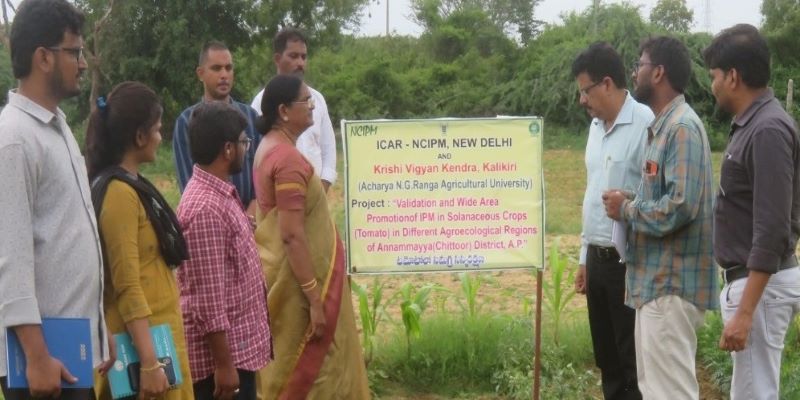

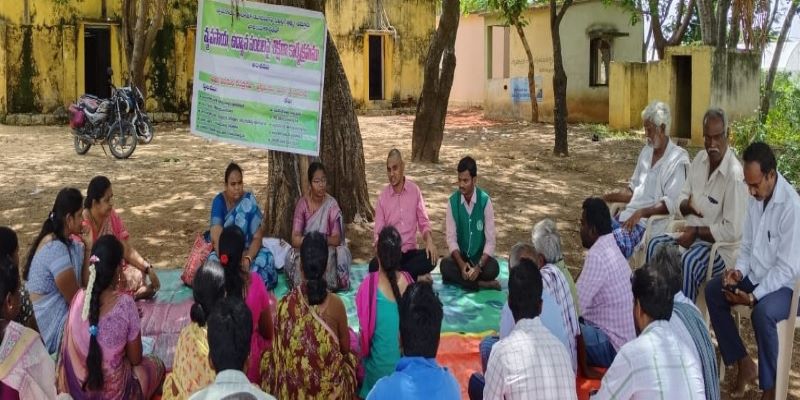





.jpg)


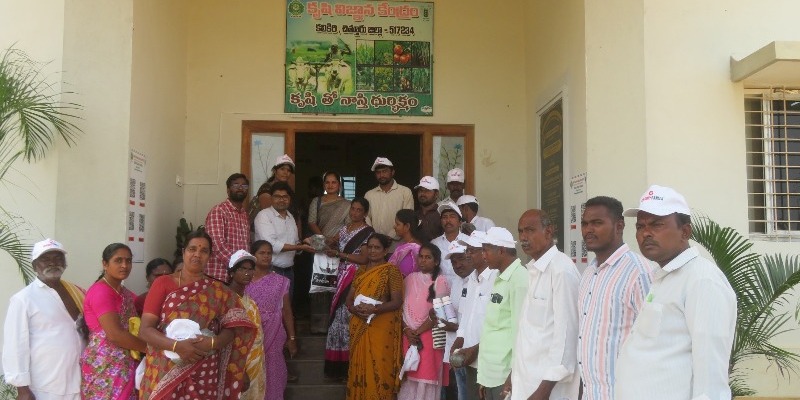
.jpg)

.jpg)

.jpg)
.jpg)





.jpg)













